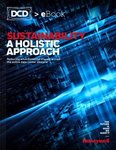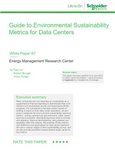This is Part Two of a series. Read Part One here
Data center operators are faced with intensifying scrutiny over their energy consumption and environmental impact.
Transitioning from traditional diesel generators to hydrogen fuel cells presents both an opportunity and a challenge, and there are a number of practicalities that need to be considered as we move towards a more sustainable energy future.
Implementing hydrogen fuel cells in place of diesel generators results in a significant change to the overall energy system of a data center. As data center designers, it is our responsibility to design the electrical and mechanical infrastructure to provide constant power and cooling to the servers. From an electrical perspective, fuel cells and diesel generators have fundamentally different properties.
To begin with, diesel generators produce alternating current (AC), whereas fuel cells produce direct current (DC). Additionally, they have varying properties when powering up and assuming high loads. This may provide novel options for DC systems within a data center, although depending on the size of the data center and the distances that electricity may have to travel, this could become inefficient.
From a mechanical perspective, designing a hydrogen storage system is significantly more complex than a diesel storage system. Hydrogen has more storage options available however, it presents higher risks than diesel such as greater flammability and explosivity, higher pressures, potential for low temperature, or chemical storage methods which are all hazardous. This therefore requires the mechanical design for such a system to comply with rigorous safety standards.
Consequently, local planning restrictions may prevent a data center from storing hydrogen onsite - a particular issue for data centers in Europe which are often located in urban and industrial environments.
There are various ways that hydrogen fuel cells could be implemented within a data center. As mentioned, there are significant costs associated with adopting this technology, and in many cases, they are not a feasible replacement for existing diesel generators as current data center sites have not been designed with hydrogen in mind. This is less of an issue in markets such as in the United States where data centers have greater access to available land.
In typical European data center locations, land comes at a premium and many data centers are located in relatively urban environments.
One suggestion is for greater integration of energy systems, which would see data centers located adjacent to energy industries or having data centers integrated with hydrogen-generating plants and fuel cells. This solution sidesteps planning problems by locating data centers alongside low-carbon energy industries. A major issue with this (aside from the available land) is blurring the lines between the data center operators, utility providers, and energy companies.
While this gives data center operators direct access to low-carbon energy, there will have to be a clear demarcation between data center operators and utility operators, as the data center operators’ primary business is data rather than energy.
In addition to the above design considerations, cost is another hurdle for hydrogen uptake. While it is hard to predict exactly how costs will vary over the coming decade, especially with recent cost fluctuations due to the energy crisis, there is a range of investments and subsidies being launched.
These aim to produce cost-competitive hydrogen at scale. This could take the form of subsidies such as contracts for difference (CfDs), which can help increase investment in low-carbon technology.
In the last decade, CfDs have played a major role in bringing down the cost of renewables for developers. This has been a success story in the UK, with the grid gaining large quantities of renewable energy.
Design-first greener, cleaner data centers
There are countries in which the local utility grid generates power from highly polluting fossil fuels such as coal. In this scenario, the carbon emissions per kWh of electricity from these girds are higher than the emissions from a fuel cell utilizing natural gas. This allows a data center to use SOFCs with a natural gas supply, which reduces or eliminates the data center's demand on the local utility grid, while also reducing the carbon footprint of the data center (when compared to a scenario in which the data center used electricity from a carbon-intensive grid).
There is also the potential to utilize waste heat in a vapor absorption machine (VAM) chiller, to provide cooling and power for further carbon mitigation. Black & White Engineering has designed data centers that use SOFCs in this capacity, which can provide the dual benefit of reducing carbon emissions and costs, while additionally mitigating demands on local utility grids.
However, a caveat to the sustainability benefits of this kind of onsite power generation is, as a country begins to decarbonize its utility grid, the emissions reduction that the data center operator previously had will be diminished, until eventually they may generate more carbon emissions per kWh than the electricity available on the utility grid.
While this is highly dependent on the country in question, a good example of this would be the combined heat and power (CHP) plants in the UK. A decade ago, these plants provided “low carbon” electricity in comparison to the grid at the time, but now in many cases, emit more carbon than local grids. Countries that already have decarbonized grids, France, Sweden, and Scotland, for example, will not benefit from a continuous system that uses natural gas to begin with.
An ideal scenario for a data center operator utilizing this system would be for a zero-carbon hydrogen pipeline to become available as the local utility grid becomes decarbonized. However, this also requires the hydrogen supply to be cost-competitive with utility electricity. As more fast-start PEM fuel cells enter the market, there will be greater flexibility in how fuel cells can be used.
PEM fuel cells would allow for dynamic changes in power generation, potentially allowing backup power options or the ability to provide services for the utility grid. Again, this would necessitate significant onsite hydrogen storage or a ‘green’ hydrogen pipeline.
In the coming years, if ‘green’ hydrogen (from renewable energy) can be made as cost-competitive and as available as current fossil fuels, it will offer a sustainable alternative to diesel for data center operators. While hydrogen technologies offer a promising solution, they are complex technologies that must be carefully implemented to ensure real carbon mitigation, practicality, and cost-effectiveness.
This is Part Two of a series. Read Part One here





